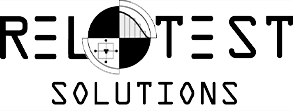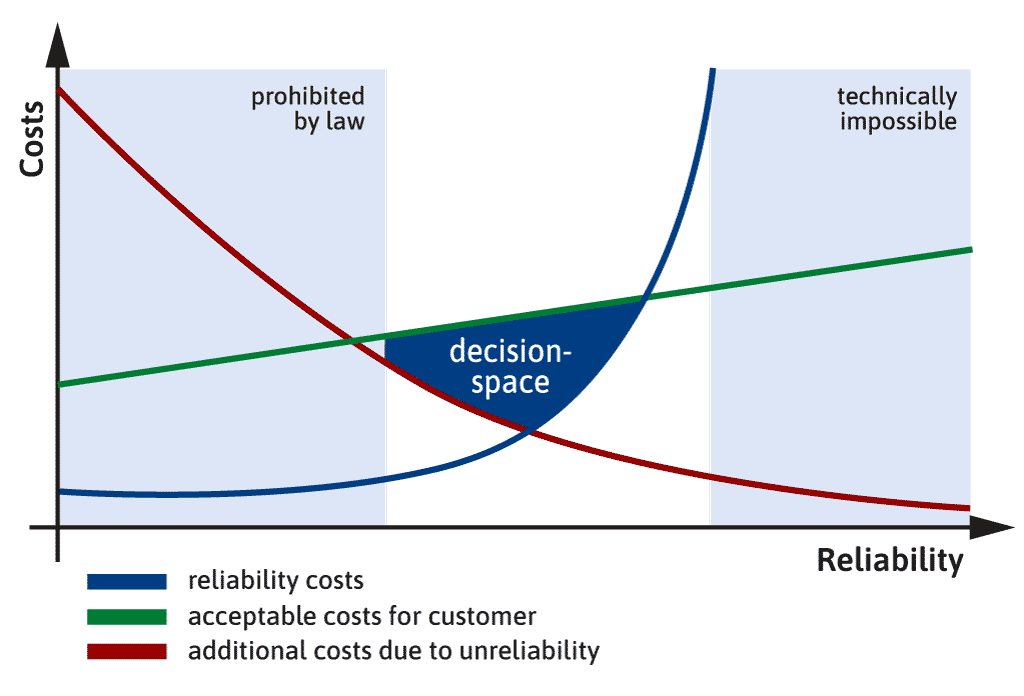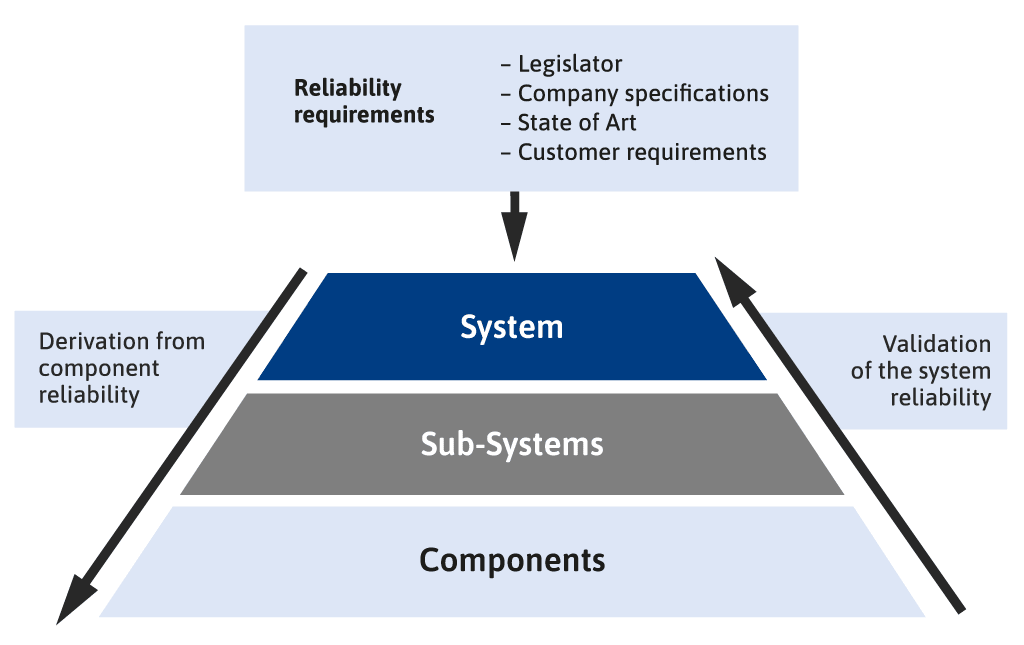At the beginning of product development, the reliability requirements to be met must be defined, taking into account not only customer requirements but also safety requirements imposed by the legislator and the corporate and product strategy. According to VDI 4007, the decision space shown is a function of legal and technical limits. Furthermore, the decision space is limited by the costs for a reliable product, the consequential costs from unreliability and the acceptable product costs from the customer’s point of view.
Reliability Planning
The reliability defined on the basis of the decision space applies to the overall product and must therefore be broken down to the individual subsystems and components. This corresponds to the top-down approach in the definition of reliability targets. This is also used when the customer directly specifies the reliability target to be met, as is the case, for example, with a manufacturer-supplier relationship. The supplier must then derive the necessary reliability of the subsystems and components for its development on the basis of the manufacturer’s specification. However, reliability targets can also be defined using the so-called bottom-up approach, in which an overall system reliability is derived starting from the component reliabilities. In summary, both approaches for deriving reliability requirements are shown in the following diagram.



